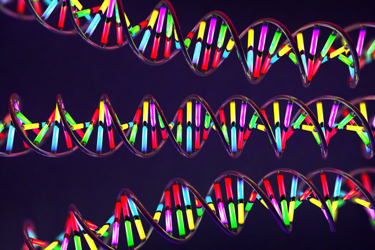Synthetic Oligonucleotides: Regulatory, Analytical & Manufacturing Considerations
By Maura Kibbey, Ph.D., and Nick Healy, U.S. Pharmacopeia (USP)

After decades of investment, research, and development, the therapeutic value of oligonucleotides has started to materialize. Dozens of developers now have dedicated pipelines for diverse indications such as oncology, central nervous system diseases, cardiometabolic disorders, liver diseases, and viral infections, including COVID-19. A search for “oligonucleotide” on ClinicalTrials.gov returned more than 50 active studies. Advances in analytical methods are helping to support these pipelines.
Across the development and release landscapes, methods continue to refine, streamline, and support the development of oligonucleotides—from new applications of nuclear magnetic resonance (NMR) spectroscopy that are pushing the boundaries of what can be accomplished in development, to innovative platform approaches for specification and release tests, to improvements in synthesis that are leveraging advances in green chemistry.
Reflecting the interest in this topic, more than 300 people attended each day of the USP’s Workshop on Therapeutic Peptides and Oligonucleotides that was held virtually throughout the first week of March 2021. Building on regulatory considerations and control strategies, the workshop explored innovative techniques being used to analyze synthetic oligonucleotides, ensure quality, and reduce waste throughout development, formulation, and manufacturing. The following summary highlights topics and themes related to oligonucleotides identified throughout the three-day workshop, which featured regulatory, industry, and academic perspectives as well as extensive question and answer sessions moderated by industry experts and Expert Volunteers from USP’s Biologics 1—Peptides and Oligonucleotides Expert Committee.
Regulatory Considerations For Oligonucleotides
On the first day of the workshop, regulatory experts reviewed important considerations for oligonucleotide development and release. Commercially available phosphoramidites with a defined impurity profile are usually acceptable starting materials based on principles in ICH Q11 and the accompanying Q11 Q&A document. Specifications for starting materials, reagents, solvents, and other raw materials should be in place to support the quality of the oligonucleotide drug substance. It was also stressed that in-process controls, including specifications and hold times for intermediates, are very important. Depending on the purpose and type of oligonucleotide, the complete molecular sequence may be required (e.g., antisense) and/or conformation (e.g., aptamers and siRNA). Once the product is well characterized and closer to commercialization, some companies have used melting temperature as a release test for identity.
Analytical technologies cannot fully separate oligonucleotide product-related impurities from the final drug substance. However, mass spectrometry (MS) coupled to ion-pair reverse-phase ultraperformance liquid chromatography (IPRP-UPLC) can be used to identify impurities co-eluting with the main product peak (usually named FLP for full length product), based on their mass and prior knowledge, and to demonstrate that manufacturing is well controlled. It was acknowledged that although both ICH Q3A and Q6A exclude oligonucleotides from their scope, their guidance is often used but not strictly followed. There have been industry efforts to suggest impurity limits, but at this time regulators have not adopted those limits. In contrast, ICH Q3C and Q3D recommendations for residual solvents and elemental impurities do apply to oligonucleotides. The U.S. FDA is working on a guidance on chemistry, manufacturing, and controls (CMC) considerations for individualized antisense oligonucleotide therapies, which should be available later this year.
Grouping of oligonucleotide impurities that elute similarly has been used successfully to develop specifications for these complex mixtures and, in some cases, prior acceptance criteria have helped inform early specifications of new oligonucleotide products using the same manufacturing platform. In addition, manufacturers also need to consider aspects beyond manufacturing capabilities, including stability data, safety data, planned clinical dose, and toxicology. While the Oligonucleotide Safety Working Group has developed a framework for the safety assessment and control of impurities, reporting, identification, and qualification thresholds have not been set by the FDA or the European Medicines Agency (EMA) and require a case-by-case approach. Manufacturers were encouraged to engage regulators to discuss data requirements for setting thresholds and limits for product-related impurities, as manufacturers must ensure the safety and efficacy of every dose.
Applying Innovative Technologies To Analyze Oligonucleotides
Presentations throughout the second day of the workshop focused on advances in analytical technologies that are supporting oligonucleotide analysis. In conjunction with regulatory guidelines, platform experience can inform specifications and control strategies for selected antisense oligonucleotide (ASO) attributes. Dr. Hong Jiang from Biogen presented a risk-based platform approach to ASO. As a release test, IPRP-HPLC, coupled with ultraviolet (UV) and MS detections (IPRP LC-UV-MS), enables impurity quantitation that is more informative than by MS alone. MS-based methods can be implemented for identity testing (i.e., sequencing by MS/MS) as well as for evaluating concentration, purity, and impurities, but using some of these methods in a QC environment can be challenging. If a well-characterized complementary strand of confirmed sequence and quality is available, then melting temperature can also be suitable as an identity test for ASO. In addition, rather than sequencing each batch, monitoring the phosphoramidites and oxidation/sulfurization reagents in-line using process analytical technology enables real-time sequence confirmation and can identify any major manufacturing issues early on. Building on significant platform manufacturing knowledge, four sets of specifications that are phase appropriate are often developed: drug substance and drug product at both early stage and late stage that are refined as more data are available.
There were also discussions on the structural characterization of oligonucleotides. The activity of ASO is dependent on the sequence, so determination of the molecular sequence is recommended. Activity for other oligos, such as aptamers and siRNA, may be dependent on conformation, requiring higher order structural characterization. Circular dichroism is useful for conformational information. Bioassays were only recommended when the tertiary structure is critical.
New applications of NMR spectroscopy are being explored on a continual basis. Dr. Alfred Ross from Roche presented applications of NMR for oligonucleotide characterization and identity testing. While NMR is not the method of choice for determining the phosphorothioate/phosphodiester nucleotide ratio, it is useful for detecting duplexes and providing information on the interaction between multiple molecular species, such as the API with excipients or metal ions. In situations where the extinction coefficient to support UV-based content measurements of conjugates is unknown, NMR serves as a valuable primary method for quantitating oligonucleotide content. NMR continues to be a versatile tool that does not require extensive method development, and even low-magnetic-field-strength benchtop NMR machines can provide valuable information during development and scale-up.
Dr. Brian Rivera from Phenomenex and Dr. Michael Bartlett from the University of Georgia College of Pharmacy presented important considerations for and applications of LC-MS-based oligonucleotide characterization. Dr. Rivera stressed that chromatographic method parameters have a considerable impact on the outcome of an LC-MS analysis for oligonucleotides, and usually IPRP chromatographic approaches are most appropriate. However, optimizing parameters — including the type of alkylamine, alkylamine ion pair concentration, temperature, flow rate, and gradient slope — as well as the concentration of the mobile phase acidic modifier (i.e., perfluorinated alcohols) can greatly improve the resolution and sensitivity. In particular, certain alkylamines may be more effective with one oligonucleotide versus another. For example, hexylamines are commonly used for some oligonucleotides but can be problematic for siRNA or duplex RNA. During optimization it is important to remember that while higher perfluorinated alcohol concentration improves chromatographic resolution, it simultaneously decreases mass spec sensitivity (ionization response).
Dr. Bartlett reviewed challenges with LC-MS analysis of oligonucleotides, such as non-specific adsorption of oligonucleotides with the LC system and micelle formation via alkylamines leading to retention loss. System suitability injections should be used to condition/passivate the column, and depassivation with low pH solutions helps to avoid leaching in subsequent injections. Higher temperatures, concentrations, and pH levels lead to micelle formation in the mobile phase, impacting reproducibility. Although higher mobile phase pH leads to column aging, lower mobile phase pH negatively impacts passivation, and balancing the two remains a challenge during method optimization.
Approaches To Oligonucleotide Manufacturing And Formulation
Oligonucleotide manufacturing is a resource-intensive process that uses hazardous reagents and starting materials from non-renewable sources. Dr. Yogesh Sanghvi discussed how to overcome manufacturing challenges by harnessing the power of green chemistry. He reviewed several initiatives to shift manufacturing to a more sustainable enterprise. For example, 2’-deoxynucleosides sourced from salmon can be replaced with fermentation-based β-2’-deoxynucleosides produced from cane sugar. Oligonucleotide synthesis using green chemistry approaches enables the use of safer solvents, easy recycling, waste minimization, faster synthesis, and greater yields.
Terminal sterilization provides the highest level of sterility assurance, and regulators have recommended that sterile drugs should only be manufactured using sterile filtration and aseptic processing when terminal sterilization is not feasible. Terminal sterilization should not be ruled out purely on the basis of increasing degradation products without proper justification. Dr. Nadim Akhtar from AstraZeneca reviewed decision trees developed by the EMA, which help manufacturers select the optimal sterilization method for their product. Many aspects of formulation should be optimized to examine the feasibility of terminal sterilization on a commercial scale. Control of pH at high temperatures is critical to the stability of oligonucleotides. While exposure to heat may impact some quality attributes, including pH, where phosphate buffer is the most robust buffer at high temperatures. Depurination events are less likely in formulations with a pH greater than 7.4. However, higher pH levels may increase deamination rates; therefore, pH should be carefully considered and optimized.
The speakers have kindly made recordings of their talks available, and these can be accessed at USP Education. USP continues to engage stakeholders to develop the standards and tools needed to ensure oligonucleotide quality throughout development, control, and release. Stakeholders across industry are encouraged to engage with USP in oligonucleotide standard development or with the development of next year’s workshop by submitting suggested topics to Maura Kibbey, senior scientific fellow, USP, at mck@usp.org.
References
- Wang F, Zuroske T, Watts JK. RNA therapeutics on the rise. Nat Rev Drug Discov. 2020 Jul;19(7):441-442.
- https://www.oligotherapeutics.org/oligonucleotides-and-the-ots-community-provide-excellent-solutions-to-the-covid-19-pandemic/
- https://clinicaltrials.gov/ct2/results?term=oligonucleotide&Search=Apply&recrs=b&recrs=a&recrs=f&recrs=d&age_v=&gndr=&type=&rslt=
- ICH Q11: Development and Manufacture of Drug Substances
- Capaldi et al., Impurities in Oligonucleotide Drug Substances and Drug Products - Nucleic Acid Therapeutics, Volume 27, Number 6, 2017.
- McElderry et al. In-line phosphoramidite identification by FTIR to support real-time oligonucleotide sequence confirmation. Org. Process Res. Dev. 2021; 25(2):262-270. https://pubs.acs.org/doi/10.1021/acs.oprd.0c00479
- https://www.ema.europa.eu/en/documents/scientific-guideline/guideline-sterilisation-medicinal-product-active-substance-excipient-primary-container_en.pdf
About The Authors:
 Maura Kibbey, Ph.D., is senior scientific fellow for education and training in USP’s Global Biologics department. She leads development of courses, workshops, and forums to engage USP’s biologics stakeholders. This role builds on her previous responsibilities directing USP scientists developing compendial standards. Before joining USP, Kibbey worked for several biotechnology and diagnostic companies in the Washington, D.C., area in scientific, management, marketing, and business development roles, as well as performing cancer research at the National Institutes of Health. She has published over 40 peer-reviewed articles and has been an invited speaker or workshop organizer for numerous scientific conferences. You can reach her at mck@usp.org.
Maura Kibbey, Ph.D., is senior scientific fellow for education and training in USP’s Global Biologics department. She leads development of courses, workshops, and forums to engage USP’s biologics stakeholders. This role builds on her previous responsibilities directing USP scientists developing compendial standards. Before joining USP, Kibbey worked for several biotechnology and diagnostic companies in the Washington, D.C., area in scientific, management, marketing, and business development roles, as well as performing cancer research at the National Institutes of Health. She has published over 40 peer-reviewed articles and has been an invited speaker or workshop organizer for numerous scientific conferences. You can reach her at mck@usp.org.
 Nicholas Healy, M.S., is a scientific technical writer at USP. He collaborates cross-functionally to support USP’s internal communications, Council of Experts, and Global Science and Standards Division. Before joining USP, he held medical writing positions in regulatory and medical affairs in addition to laboratory positions in medical device manufacturing and biologics development. Healy received his B.S. and M.S. from Towson University, specializing in biology and scientific writing. Mr. Healy is currently completing an M.S. in biotechnology at Johns Hopkins University.
Nicholas Healy, M.S., is a scientific technical writer at USP. He collaborates cross-functionally to support USP’s internal communications, Council of Experts, and Global Science and Standards Division. Before joining USP, he held medical writing positions in regulatory and medical affairs in addition to laboratory positions in medical device manufacturing and biologics development. Healy received his B.S. and M.S. from Towson University, specializing in biology and scientific writing. Mr. Healy is currently completing an M.S. in biotechnology at Johns Hopkins University.
The US Pharmacopeia (USP) is an independent, nonprofit, scientific organization that collaborates with the world's top experts in health and science to develop quality standards for medicines, dietary supplements, and food ingredients. Through our standards, advocacy and education, USP helps increase the availability of quality medicines, supplements and food for billions of people worldwide
